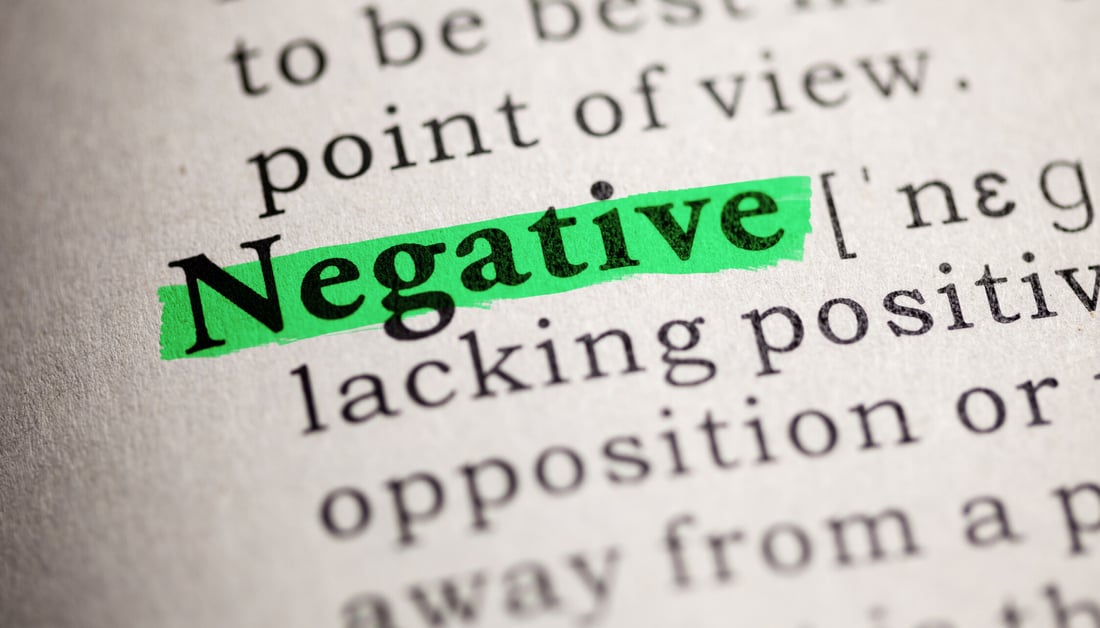Unfortunately, we've all crossed paths with a negative coworker or boss. Someone who's mood is perpetually down or one who appears to enjoy being difficult. The whiner who goes on about always being assigned the most challenging unit. The complainer who moans continually about being short-staffed. The "woe is me" guy or gal who can't be quiet concerning how no one pays him/her a lick of attention. The general negative Nelly/Ned for whom it is apparently impossible to be pleased about anything. Then there's the one who laments how hard he/she works while striving to do as little as possible.
Negative coworkers do often score high marks in one area: the ability to bring down everyone around them. Their negativity impacts overall productivity and can land damaging blows to team dynamics, wreaking disruption and destruction, and creating a most challenging situation for both colleagues and management.
Confronting a person about their negativity often serves only to worsen the situation, as feedback about a person's character can heighten feelings of social rejection, which may increase negativity. While we can't control the people around us, we can control our response to unpleasant scenarios and choose to view the situation as an exercise in learning to advocate for ourselves.
Strategy #1: LeaderStat's Kendra Nicastro suggests the self-advocacy option, noting how it's common for one's mindset to shift when surrounded by negativity, even to the point of thinking this is a lousy job!
"Set healthy boundaries with negative coworkers. If you normally take breaks and eat lunch together, try limiting the time you spend with them."
Distancing yourself physically whenever possible from the naysayers will lessen their impact on your moods and thoughts.
Separating yourself mentally is just as crucial. Create an intentional barrier of protection around your mind and emotions before spending time around them. Preparing yourself, psyching up your response center, if you will, can insulate you from their constant negative barrage. Whenever possible, surround yourself with positive folks whose sunny disposition can also impact your mood. When the choice is yours, hang around those who see the opportunity and excitement your workplace provides and, who possess gratefulness for the organization.
Strategy #2: Turn the mirror toward yourself with several probing questions—
- Could I be contributing, even in a small way, to the negative behavior?
- Am I contributing to an environment that invites negative behavior?
- Am I looking to others to make me happy and to create positivity for me?
It's too easy to get caught up in the blame game. "He always does this . . ." or "She never helps/listens/says anything nice . . ." But a conscious effort to examine one's behavior may turn up contributing factors we'd been unaware of or unwilling to admit.
Strategy #3: Change your approach. Shaking things up a bit concerning how you respond to a negative coworker could make a significant difference in your working relationship. Experiment with a few of these suggestions from Deborah Grayson Reigel—
- Shift from a "just business" response to demonstrating interest in her/him personally.
- Rather than always walking on eggshells, try being direct with your requests.
- Instead of focusing on the differences between you, look for areas of similarities.
- Change from excluding to inviting him/her from social gatherings with coworkers.
- Sometimes avoidance is necessary, but also look for opportunities to offer some positive feedback.
With a focus toward your initiatives and responses, you can influence the impact of negative workplace relationships and work toward a more positive and enjoyable environment.
-1.png?width=292&height=64&name=LeaderStat%20Logo%20(4)-1.png)


-1.png?width=258&name=LeaderStat%20Logo%20(4)-1.png)